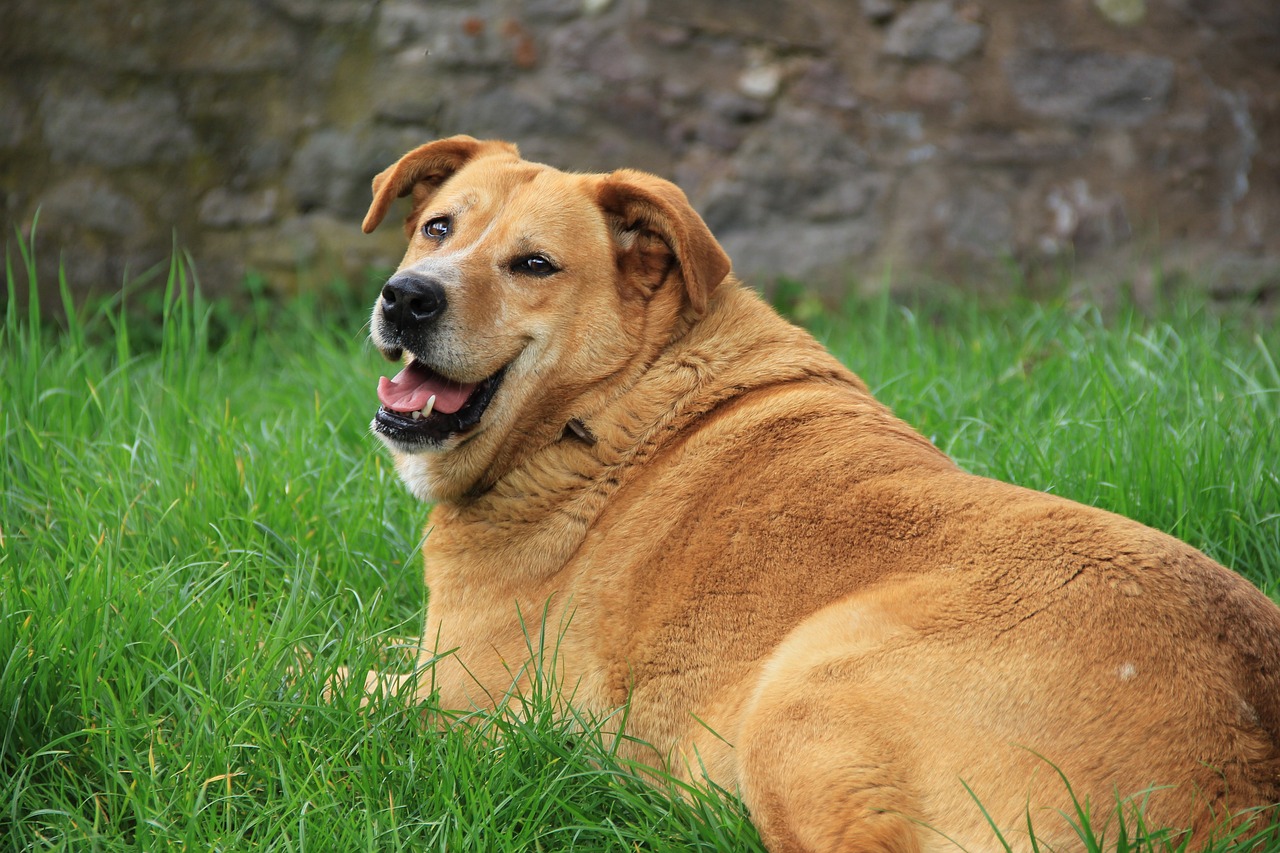I have been told that my dog is obese and must be put on a diet. Is this true?
Nearly one-third (33%) of all adults in the United States are obese. Unfortunately, this same number now applies to our pets. Obesity leads to several diseases both in pets and people. Type II diabetes, heart disease and arthritis are the most common weight-related disorders.
Diet and weight reduction are the key to ensuring that your pet lives as long and healthy a life as possible.
What is obesity?
Obesity is defined as weighing 30% more than the ideal weight. With humans, this is fairly straightforward and can be determined by consulting weight and height charts. Dogs and cats are often diagnosed as obese by a combination of weight charts and body scoring.
A simplified form of body scoring follows:
VERY THIN
RIBS – Easily felt with no fat covering
TAIL BASE – Bones protrude with no tissue between the skin and bone
SIDE VIEW – Severe abdominal tuck or “drawn” appearance
OVERHEAD VIEW – Exaggerated hourglass shape
UNDERWEIGHT
RIBS – Easily felt with no fat covering
TAIL BASE – Bones are raised with little tissue between the skin and bone
SIDE VIEW – Abdominal tuck
OVERHEAD VIEW – Significant hourglass shape
IDEAL
RIBS – Easily felt with slight (1/2”) fat cover
TAIL BASE – Smooth but bones can be felt under a thin layer of fat
SIDE VIEW – Abdominal tuck
OVERHEAD VIEW – Well-proportioned waist is present
OVERWEIGHT
RIBS – Difficult to feel with moderate (>1/2”) fat cover
TAIL BASE – Some thickening or widening but bones can be felt under a moderate layer of fat
SIDE VIEW – No abdominal tuck or waist
OVERHEAD VIEW – Back is slightly broadened
OBESE
RIBS – Difficult to feel under thick fat cover
TAIL BASE – Thickened and difficult to feel under a thick layer of fat
SIDE VIEW – Fat hangs down from the abdomen and there is no waist
OVERHEAD VIEW – Markedly wide
If my dog is overweight, will his behavior change?
Most overweight or obese dogs are less active and do not play as much as normal dogs. These pets may be reluctant to climb stairs or jump into cars and often pant excessively after very minor exertion.
What is the cause of obesity?
Obesity is the accumulation of excess energy stored as fat. It occurs when your pet receives more calories then he needs and expends. Hypothyroidism is another cause of obesity and weight problems. Any overweight dog should be tested for hypothyroidism before beginning a weight loss program.
I had my dog neutered. Do you think this caused the problem?
It is very unlikely that neutering caused your pet’s weight problem. There is no scientific research that concludes that neutering causes obesity in dogs.
My dog can’t be obese because he only eats a small amount of food every day.
Obesity often develops insidiously. We think we are feeding our dogs only small quantities of food but tend to forget the treats and table foods. These treats add calories and result in weight gain. Even a few calories can add up over time.
What can I do?
With today’s advances in nutrition, weight loss has never been easier. Your veterinarian will design a safe and effective weight loss program to meet your dog’s lifestyle.
Encourage brisk, thirty-minute walks twice daily. Discontinue feeding table foods and treats. Instead, offer carrots, broccoli or veterinary-approved low-calorie treats.
Most pets can lose weight if you adhere to these recommendations. Weight loss in pets and humans is made up of an interaction between reduced caloric intake (eating less) and increasing caloric expenditures (more physical activity). The great news is that weight reduction is about 60% diet and 40% exercise. Weight loss is often a matter of diligence and persistence. Remember that the reason you are doing this is to help your pet live as long and healthy a life as possible. Who knows, you both may benefit from this diet!

